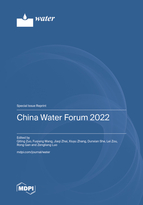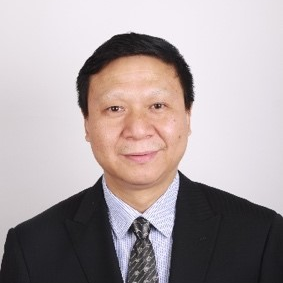China Water Forum 2022
A special issue of Water (ISSN 2073-4441).
Deadline for manuscript submissions: closed (31 January 2023) | Viewed by 25408
Special Issue Editors
Interests: human–water harmony; climate change adaptation; integrated water resource management; interconnected river system network; high-quality development for Yellow River; water environment protection
Special Issues, Collections and Topics in MDPI journals
Interests: ecological hydrology; wetland protection and restoration; water resources planning and management; eco-hydrological process of wetland
Special Issues, Collections and Topics in MDPI journals
Interests: water cycle model; mechanism of water resources attenuation; efficient utilization of water resources; eco-hydrological process in arid area
Special Issues, Collections and Topics in MDPI journals
Interests: water resources dynamic carrying capacity; water security under climate change; high efficient utilization of water resources; utilization of rainwater and flood resources in river basin; construction and application of water cycle model
Special Issues, Collections and Topics in MDPI journals
Interests: climate change and extreme hydrological events; urban hydrology
Special Issues, Collections and Topics in MDPI journals
Interests: satellite remote sensing; hydrological modeling; climate and land use change
Special Issues, Collections and Topics in MDPI journals
Interests: distributed hydrological model; effects of climate change on hydrological processes; uncertainties of hydrological models; baseflow separation
Special Issues, Collections and Topics in MDPI journals
Interests: hydrological modelling; water budget assessment; precipitation merging technologies and products based on multiple remote sensing
Special Issues, Collections and Topics in MDPI journals
Special Issue Information
Dear Colleagues,
Affected by global climate change and rapid socio-economic development, China faces serious water security issues, especially in terms of water shortages, flood disasters, and water-related ecological and environmental problems. These challenges related to China’s water issues have restricted the country’s social and economic development, highly valued by the world. Therefore, water issues in China are complex and need to be addressed urgently. This requires comprehensive research across different disciplines.
Focusing on discussing China's water issues, we have carried out a series of academic exchanges for a long time. The well known “China Water Forum”, launched in 2003 and held annually, focuses on discussing solutions to China's water issues. By 2022, the forum has been successfully held for 19 sessions. “Water Science Development Forum”, launched in 2007 and held annually, focuses on promoting the multidisciplinary integration of other disciplines with water science research. By 2021, the forum has been successfully held for 15 sessions. “Water Science Lectures”, launched in 2021, is an open, shared and non-profit public welfare lecture. A report will be arranged for each lecture, lectured and presided by invited famous researchers.
The Editorial Department of Water Journal cooperates with “China Water Forum”, “Water Science Development Forum”, and “Water Science Lectures” to set up a series of columns. At least one column is planned each year currently. The column established in 2022 is “China Water Forum 2022”. We welcome scholars and graduate students participating in the abovementioned conferences, as well as scholars who study water issues of China, to submit full texts of their unpublished manuscripts. The received papers will be professionally peer reviewed and recommended for publication by the editorial board.
Four volumes (working Group):
We invite submissions in, but not limited to, the following topics:
- Climate change and hydrology. Director: Dunxian She, Rong Gan
- Water problems and human–water relationship control. Director: Zengliang Luo, Qiting Zuo
- Water environment and ecology. Director: Fuqiang Wang, Jiaqi Zhai
- Water information technology and modeling. Director: Lei Zou, Xiuyu Zhang
Prof. Dr. Qiting Zuo
Prof. Dr. Fuqiang Wang
Prof. Dr. Jiaqi Zhai
Dr. Xiuyu Zhang
Dr. Dunxian She
Dr. Lei Zou
Dr. Rong Gan
Prof. Dr. Zengliang Luo
Guest Editors
Manuscript Submission Information
Manuscripts should be submitted online at www.mdpi.com by registering and logging in to this website. Once you are registered, click here to go to the submission form. Manuscripts can be submitted until the deadline. All submissions that pass pre-check are peer-reviewed. Accepted papers will be published continuously in the journal (as soon as accepted) and will be listed together on the special issue website. Research articles, review articles as well as short communications are invited. For planned papers, a title and short abstract (about 100 words) can be sent to the Editorial Office for announcement on this website.
Submitted manuscripts should not have been published previously, nor be under consideration for publication elsewhere (except conference proceedings papers). All manuscripts are thoroughly refereed through a single-blind peer-review process. A guide for authors and other relevant information for submission of manuscripts is available on the Instructions for Authors page. Water is an international peer-reviewed open access semimonthly journal published by MDPI.
Please visit the Instructions for Authors page before submitting a manuscript. The Article Processing Charge (APC) for publication in this open access journal is 2600 CHF (Swiss Francs). Submitted papers should be well formatted and use good English. Authors may use MDPI's English editing service prior to publication or during author revisions.
Keywords
- climate change and hydrological evolution
- water resources evaluation, planning and management
- flood, drought and water security
- human-water relationship and comprehensive control
- ecohydrology and water environment protection
- groundwater resources and environment
- water information technology and modernization construction
- layout and demonstration of major water conservancy projects
- water policy and water control strategy













